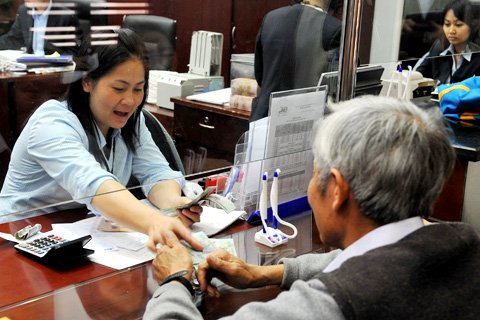VietNamNet Bridge – The decreases in the kieu hoi (overseas remittance) inflow
to Vietnam and the declines in the operation of financial channels in Vietnam
have both raised big worries. Is the decline temporary, or is this a worrying
long term tendency?

According to the World Bank, Vietnam is the 16th biggest kieu hoi receiver in
the world and the 9th biggest receiver among developing countries with 8.26
billion dollars remitted to Vietnam in 2010 and 9 billion dollars in 2011.
A survey conducted on official remittance channels, the majority of the kieu hoi
came from the US, where there is the most crowded community of overseas
Vietnamese people. Meanwhile, HCM City is the locality which receives the
highest volume of kieu hoi (55.6 percent of kieu hoi to Vietnam in 2011).
According to the National Finance Supervision Council, a high percentage (52
percent) of the kieu hoi has been used as capital invested in the real estate
sector.
The figure of 9 billion dollars worth of kieu hoi in 2011 showed that the kieu
hoi has been increasing steadily and rapidly over the last 10 years, if noting
that only 1.75 billion dollars were remitted in 2001.
The state’s open policies have helped attract kieu hoi sources. Since August
2003, joint stock banks can set up companies specializing in providing kieu hoi
services, thus helping make the remittance easier.
The experts from the banking academy, after analyzing the influences of kieu hoi
to the Vietnam’s national economy, emphasized the four things the “gold stream”
can bring.
Firstly, kieu hoi serves as a stable source of foreign currencies to Vietnam
amid the instability of other sources, including the foreign direct investment (FDI)
and official development assistance (ODA). In 2011, the kieu hoi to Vietnam was
just 2 billion dollars lower than the FDI registered capital.
Secondly, kieu hoi helps keep the national payment in balance. In 2011, the
Vietnam’s trade gap of 9.8 billion dollars (the import turnover was 9.8 billion
dollars higher than export turnover), was offset by the kieu hoi.
Thirdly, kieu hoi helps push up the integration of Vietnam into the
international financial system, improve service quality and establish relations
with foreign banks.
And fourthly, kieu hoi has helped improve the living standards, attract
investment and reduce the unemployment rate.
Is the current decline temporary or long-lasting?
Nhip cau dau tu quoted its sources as reporting that by the end of June 2012,
about 1.9 billion dollar worth of kieu hoi had flown to HCM City, a sharp fall
of 500 million dollars in comparison with the same period of the last year.
The big difficulties of the world economy, the domestic frozen real estate
market, the policy on setting dollar ceiling interest rate all have been cited
to explain the sharp decrease.
A research work by Pfau and Long published in 2006 showed that 73 percent of
foreign currencies were used for consumption purpose, while only 6.6 percent for
investment. However, later, kieu hoi has been used as investment capital.
The kieu hoi flow has decreased recently, because overseas Vietnamese and their
relatives in Vietnam cannot see good business opportunities. The real estate
sector, which attracts big investments (4.7 billion dollars in 2011), has become
frozen.
Meanwhile, they also do not have many opportunities to invest in domestic
businesses. The uncertainties of the national economy, which has forced the
State Bank to apply a tightened monetary policy, has put a hard pressure on
commercial banks and businesses. The lack of experience in dealing with risks
has led to 8.4 percent (31,425 businesses out of 375,732) getting dissolved.
Thien Thuan – Van Anh
- © Copyright of Vietnamnet Global.
- Tel: 024 3772 7988 Fax: (024) 37722734
- Email: evnn@vietnamnet.vn